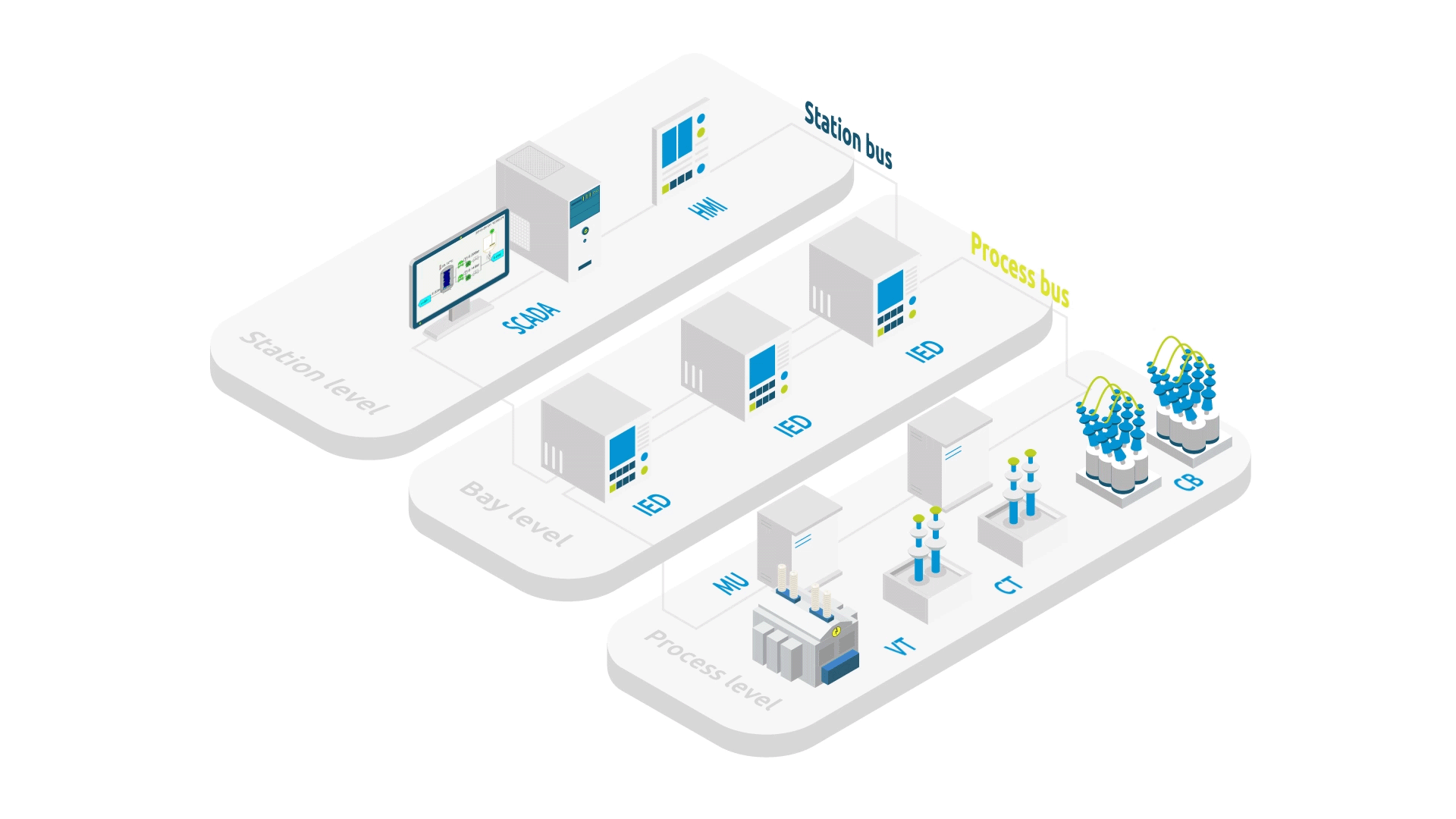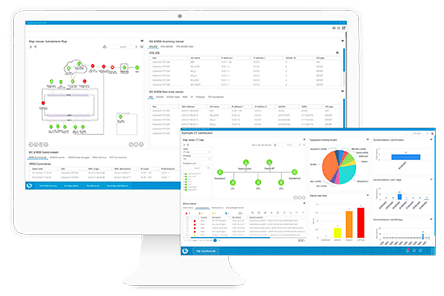30 Apr 2021
- Last update on 27 May 2024
IEC 61850 is an international standard that defines communication protocols to provide communication between different equipment located in a substation, such as protection, control, and measurement equipment, as well as (IEDs) intelligent electronic devices.
From its first version, this standard reached considerable success in substation communication networks and systems management. Nowadays, it is not only applicable to utilities, it is also used in other industries such as wind energy, EV charging…
Why did IEC 61850 become so successful?
- Unifies communications, avoiding proprietary protocols.
- Provides interoperability, by integrating equipment from several manufacturers.
- Reduces costs (wiring and engineering time).
- Improves set-up and maintenance processes.
- Future-proof standard meeting your evolving needs.
What are the key aspects?
For many years, organisations used different protocols to provide communication and keep their network infrastructures running properly. IEC 61850 came forth from the need to unify these protocols (proprietary and standardised).
For mission-critical organisations this is something that becomes even more difficult. They not only need to provide seamless communication, but they also need to keep their infrastructures secure at all times.
Also, IEC 61850 aims to provide interoperability, a key concept to allow for the integration and management of equipment from different manufacturers.
The reality is that the entire world is moving forward with the IEC61850 standard.
Understanding IEC 61850
3 levels are defined by IEC 61850, please note that each level contains different devices:

- PROCESS LEVEL: in this level there are different devices such as switchgears, like circuit breakers, switches, a current transformer and a voltage transformer.
- BAY LEVEL: here we can find intelligent electronic devices called IEDs. IEC 61850 defines a process bus to allow communications between IEDs and intelligent instruments and switchgears.
- STATION LEVEL: contains SCADA and HMI systems; used for substation control and monitoring. Station level uses a station bus to be able to communicate with IEDs located in a bay level.
Communication protocols of IEC 61850
Although Internet protocol structures provide a secure way of transmitting data, it is slow for real-time systems. That’s why the standard makes the process faster for different protocols for different applications:
- MMS (Manufacturing Messaging Specification): it is widely used for communication between the IEDs and SCADA system for application, configuration, and monitoring data exchange.
- GOOSE (Generic Object-Oriented Substation Events): it is used to send messages regarding the status between IEDs. Frequently used for teleprotection tripping.
- SMV (Sampled Measured Values): provides fast and reliable communication of measurement, protection and control values of power systems mostly from CT (current transformers) and VT (voltage transformers).
Interested in delving deeper into IEC 61850 protocols? Click here to explore and expand your knowledge!
What are the key benefits?
- Assuring communication between multi-vendor equipment avoiding proprietary protocols.
- Improving visibility of your substation and its assets.
- Cost effectiveness.
- Improved configuration and maintenance.
- Object-oriented representation of data.
- Easier mapping for third-party applications to access information from multiple IEDs from different manufacturers.
- Making it easier for application designers so they no longer have to deal with complex representations.

Don’t let substation automation systems give you a headache. Our solution D-Substation from SGRwin is the answer to all your monitoring needs. With its seamless interoperability, you’ll get unparalleled visibility into your substation’s performance, security aspects, and events.
Ready to take the first step towards smarter substation management?
Share your project requirements with us and our expert team will guide you through it all. Or, if you want to see our solution in action, schedule a demo today!
